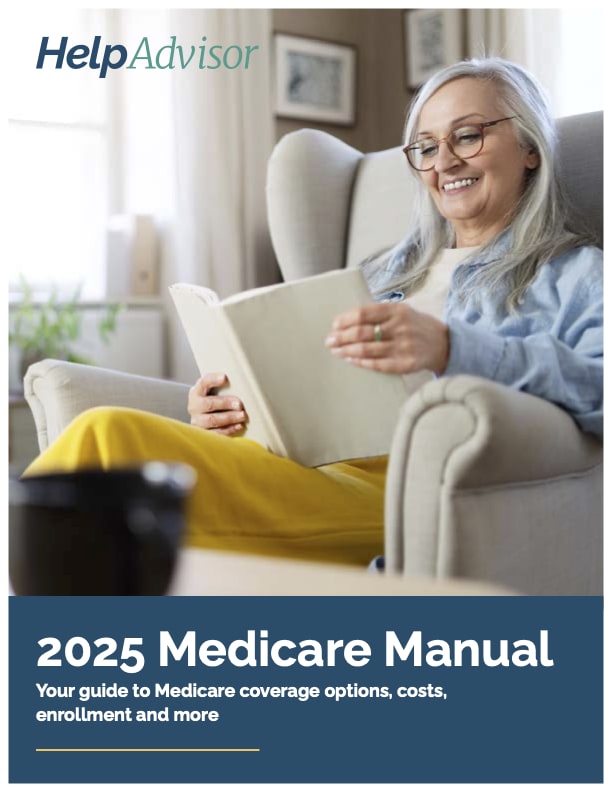How to Find Help With Skyrocketing Prescription Drug Costs
- Learn more about prescription assistance programs for seniors, including income limitations, enrollment procedures and coverage options for Medicare extra help.

It’s no secret that medication can be a common part of senior life. According to a recent study from the Kaiser Family Foundation (KFF), in fact, 89% percent of Americans over the age of 65 take prescription drugs regularly.
Seniors are also more likely to use more than one prescription drug, with over half taking four medications or more. With so many older adults taking medications, prescription assistance programs can be a critical resource.
For the majority of American seniors, Medicare prescription drug plans (also known as Medicare Part D), are the top choice for obtaining prescription drugs.

Learn More About Medicare
Join our email series to receive your free Medicare guide and the latest information about Medicare.
By clicking "Sign me up!" you are agreeing to receive emails from HelpAdvisor.com
Thanks for signing up!
Your free Medicare guide is on the way.
Make sure to check your spam folder if you don't see it.
Medicare Part D Prescription Drug Coverage
Initially proposed by President Bill Clinton in 1999, Medicare Part D is a voluntary prescription drug plan that is facilitated through private insurance companies approved by the federal government.
The program was initially brought to Congress by President George W. Bush in 2002 and was signed into law in 2003. It was fully enacted in 2006, and low-income enrollees between 2004 and 2006 had access to federally-issued drug discount cards with up to $600 in credits towards prescription drugs.
Despite this step to help low-income seniors afford prescriptions, only one-third of all enrollees obtained the cards.
While Medicare Part D has become an integral part of America’s senior health services, it is still plagued by affordability issues.
In their study, KFF found that 76% of all seniors reported that the cost of prescription drugs through Medicare Part D is unreasonably high, and 23% claimed that it is hard to afford their prescriptions. This viewpoint held true across seniors of all political demographics, with 70% of Republicans, 74% of Independents and 81% of Democrats asserting that prescription drug costs are too high.
Seniors in poor health, those with an income less than $30,000 annually and those taking four or more prescriptions were the most likely to report difficulties affording their prescriptions.
Fortunately for these seniors, there are various prescription drug assistance programs available through federal and state governments, national nonprofits and even drug manufacturers. In this guide, we’ll break down some of the prescription assistance programs available to seniors on a national level and also explain how to find local resources and make the most of senior discounts.
National Prescription Assistance Programs
The nation’s senior population is projected to grow at unprecedented levels1 in the following decades, so it’s critical that prescription drugs are available to seniors at every income level. The federal government addresses this need with a program called Medicare Extra Help.
Many leading drug manufacturers also offer assistance programs for low-income seniors and a selection of national nonprofits also offer prescription help for seniors.
Medicare Extra Help
What Is Medicare Extra Help?
Medicare Extra Help2 is a federal program that offers prescription cost assistance for low-income Medicare enrollees. It is also referred to as the Medicare Low-Income Subsidy (LIS).
This funding can help cover the costs of monthly insurance premiums, co-pays, deductibles and other costs associated with a Medicare Part D plan. Extra Help recipients can obtain as much as $5,0003 in cost assistance annually, but the program is limited to those with limited resources.
Do I Qualify for Extra Help With Medicare?
Medicare Extra Help is intended for low-income seniors and has strict qualification limits. To qualify, applicants must not have resources in excess of $16,660 for an individual and $33,240 for couples.
To determine an applicant's level of resources, the Social Security Administration (SSA) reviews the total value of various assets including:
- Income
- Investments, including stocks, bonds, mutual funds, IRAs and 401(k)s
- Checking and saving accounts plus certificates of deposits
- Real estate other than a primary residence
- Cash located in your home or elsewhere
Many forms of assets, however, are exempt and do not count as resources when applying for Extra Help.
These can include:
- Housing assistance funds
- Social Security or Supplemental Security income that is due retroactively
- Life insurance policies
- End of life expenses and the interest earned on those savings
- Personal possessions, including vehicles and items that cannot be easily converted into cash, such as jewelry and antiques
- Non-residential property that is used for self-support, including business rentals or agriculture lands
- Funds received as settlements as the victim of a crime
- Relocation assistance funding paid through a state or local government
- Cash advances associated with child tax credits and earned income tax credits
In addition to resource limitations, Extra Help applicants must meet certain income requirements. Individuals must not earn more than $21,876 and couples must not earn more than $29,580. But like the resource calculations, there are some exceptions that may allow seniors with higher incomes to meet the Extra Help requirements.
Some examples include:
- Disaster relief funding
- Educational scholarships and grant money
- Food stamps
- Housing assistance
- Cash assistance from others to help pay living expenses
- Home energy cost assistance
Some additional cash exemptions may also be available to those who have earnings from work and residents of Alaska and Hawaii.
How Do I Apply for Medicare Extra Help?
The first step in receiving Medicare Extra Help is to access the Application for Extra Help With Medicare Prescription Drug Plan Costs, also known as form SSA-10204.
The SSA recommends filing this form online, but it can also be printed and mailed. The online interface walks applicants through the process step-by-step and provides help windows along the way. Using this approach allows applicants to start, stop and save their application at any time, and it can be completed at one’s own pace.
Before starting the application, each individual should identify which resources they own entirely and what may be shared with a spouse. The SSA will also need to review several documents, including bank and investment account statements, tax returns, payroll slips and pension award letters. It’s best to collect all of these documents before starting to help the application process go smoothly.
Other useful information to have before starting the Extra Help application is a total of calculated resources and an estimated dollar amount of monthly income.
The income sources that should be calculated include:
- Alimony payments
- VA benefits
- Self-employment earnings
- Income from rental properties
- Workers’ compensation
- Social Security benefits
- Wages from a job
- Annuities and pension funds
- Unemployment and disability benefits
When submitting these documents and calculations, it’s important to understand that SSA will verify your figures with those submitted to other government agencies, so accuracy is key. Those who have been accepted into the Extra Help program will be notified by the SSA with a mailed letter.
What Else Should I Know About Medicare Extra Help?
There are a few other key points to know about the application process for Medicare Extra Help. For example, caregivers, spouses and family members may fill out the application for seniors who need assistance. In these cases, the helper should answer the questions and submit all the required calculations as if the applicant is preparing the document.
Another key point is that Extra Help recipients may be able to have Medicare Part D late enrollment penalties waived. These penalties can arise if a Medicare beneficiary is eligible for a Part D but does sign up during their enrollment period. In some cases, this penalty can be assessed for the life of the Part D plan. With Extra Help, seniors may not have to pay these penalties even if they enroll in Part D after their specified enrollment period.
A final noteworthy element of Extra Help pertains to American Indians and Alaska Natives.
Seniors from both of these communities may have further exemptions in the calculated income and resources, including:
- Lands owned an individual American Indian or a tribe that are held in trust by the United State Government
- Cash payments to tribe members created by federal legislation
- Funding for Indian tribes held in trust by the Secretary of the Interior
- Disbursements to certain Alaska natives from Alaska Native Regional and Village Corporations
- Up to $2,000 for individual tribe members generated by trusts or restricted lands
Patient Assistance Programs
While the Medicare Extra Help program is a good choice for many seniors, some prescription drug makers also offer low-income subsidies. Such programs, called patient assistance programs (PAPs), help low-income seniors afford certain prescription medications by offering the drugs at deeply discounted rates5.
Pharmaceutical manufacturers often establish PAPs for specific, high-cost drugs in their catalog, especially those that are used for multiple conditions.
Each manufacturer sets their own qualification guidelines for these programs, so there’s no national standard. The best way for low-income seniors to seek assistance through a PAP is to submit an application directly to the manufacturer.
Start by consulting with a physician to determine who makes the required drug and if they offer a support program6. A doctor or their staff may be able to provide guidance on where to find applications or, in some cases, may be able to apply on a patient’s behalf. Medicare.gov7, the National Council on Aging8 and the Pharmaceutical Research and Manufacturers of America9 also provide search tools to help low-income seniors identify possible PAPs.
As with Medicare Extra Help, PAPs are strictly limited to low-income seniors. Most programs require that applicants submit a mix of personal documents and records to affirm their financial status.
In some cases, older adults who already receive low-income subsidies covering medications won’t qualify10. This can include Medicaid and Medicare Extra Help recipients. Manufacturers can, however, provide assistance to those on Medicare Part D plans who are not receiving other forms of government subsidies.
Manufacturers have the choice to either provide free or low-cost medications directly to patients or to operate within the Medicare system11. When a PAP operates outside the Medicare system, the financial value of that assistance may not count towards the enrollee’s true out-of-pocket costs (TrOOP).
This is the maximum amount that a beneficiary can spend before they reach a level that is deemed catastrophic by their Part D plan. Once a beneficiary reaches that level, they no longer have to pay the full out-of-pocket cost for drugs. When PAPs operate within the Medicare system, their contributions may count towards a senior’s annual TrOOP. While this may seem like a minor detail, it could have major implications for seniors who are expecting to reach the catastrophic point of their plan.
And though PAPs may provide legitimate financial relief to low-income seniors, these programs have also found significant controversy. In an investigative piece from Los Angeles Times12, industry experts explained that these programs may not be fully anchored in altruism but also serve as valuable marketing tools. Manufacturers often spotlight PAPs in advertising and, according to the report, could help build brand loyalty for certain manufacturers and drugs.
In some cases13, pharmaceutical manufacturers have even been accused of using their PAPs to help drive demand and then drastically increasing costs on full-paying users.
Free and Nonprofit Prescription Assistance Program Resources
In addition to the Medicare Extra Help program and pharmaceutical manufacturer PAPs, there are many national nonprofits focused specifically on helping seniors afford medication. Here are some of the leading nonprofits:
- Patient Services Incorporated14
This organization provides financial support and counseling to those with specific, rare, chronic conditions, including bleeding disorders, autoimmune illnesses and some forms of cancer. Assistance is available in the form of co-payment and insurance premium assistance for American citizens who are receiving treatment within the country. Services are offered to both low- and higher-income applicants.
- CancerCare Co-Payment Assistance Foundation15
Funding is offered to those requiring assistance with treatments and prescriptions for cancer. Applicants must be insured and their income must not exceed four or five times the national poverty level. Enrollment is limited to certain forms of cancer, but accepted forms may be subject to change over time.
- National Organization for Rare Disorders (NORD)16
NORD offers drug cost assistance through a program called RareCare. To qualify, applicants must be diagnosed with a qualifying rare, chronic illness and have a doctor’s referral. Assistance is also available for insurance premiums, co-pays, diagnostic testing and travel for clinical trials. Income limitations also apply.
- Good Days17
This group provides financial support to individuals with chronic illnesses who have been prescribed medication that they can’t afford. Assistance is available to U.S. citizens with a valid Social Security number who are currently receiving treatment within the country. Applicants’ income must be no more than 500% of the federal poverty level and they must have insurance with at least 50% coverage.
- Patient Advocate Foundation’s Co-Pay Relief (CPR)18
CPR provides financial assistance to cover drug co-pays for those with selected illnesses. Assistance is organized in funds for each disease and applicants may only apply to funds when they are deemed open by CPR. Applicants may be required to meet insurance, residency and income requirements for approval.
- The HealthWell Foundation19
HealthWell works to break down barriers to care for those with chronic and life-altering diseases. Like CPR, this organization awards assistance grants from funds that are dedicated to a range of specific illnesses. Each fund has open and closed enrollment periods and funding can be used for premiums, co-pays, out-of-pocket costs and deductibles.
- GoodRx20
GoodRx is a web-based resource that allows users to compare drug prices offered at pharmacies with a specific region. Users can search prescription drugs by name and GoodRx provides any discount coupons that are available for that drug. These coupons can then be transferred to a smartphone and presented during checkout at a pharmacy.
- The Leukemia & Lymphoma Society (LLS)21
Seniors with leukemia, lymphoma and blood cancers may qualify for financial assistance through LLS. Drug co-pays, insurance premiums and other expenses are available and can be applied to all forms of Medicare as well as Medicaid and private insurance. Applicants must meet income requirements and provide a referral confirming their condition.
- NeedyMeds22
NeedyMeds is a nonprofit that helps connect people with affordable medication and health care programs. Users can search extensive databases of information about programs that may fit their profile and also search for specific prescription drugs by name. This service is open to seniors and non-seniors of any income level.
- PatientAssistance.com23
This nonprofit offers users access to a database of PAPs and streamlines the application process by listing enrollment forms directly on the site. A range of educational articles about medications is also available, as is information about prescription drug discount cards.
- Partnership for Prescription Assistance (PPA)24
The PPA is a service offered by the Pharmaceutical Research and Manufacturers of America’s (PhRMA). It allows low-income users to search for PAPs from many of the world’s leading manufacturers including GlaxoSmithKline, AstraZeneca, Merk, and Johson & Johnson. Other resources, such as Medicare and Medicaid information, and a health care glossary are also available.
- RxHope25
Like the PPA, RxHope offers a search function for PAPs offered through manufacturers. Users can download applications and review descriptions of PAPs based on search results for specific medications.
- RxAssist26
RxAssist is also a search resource for those seeking assistance with PAPs. This site also has its own prescription drug discount card that’s available to users at any income level. Users can get more information about PAPs, Medicare Part D and other topics by visiting the site’s resources tab.
- Center for Benefits Access27
The Center for Benefits Access is a resource offered by the National Council on Aging that helps low-income seniors and disabled people enroll in cost-saving programs. There 84 Benefits Enrollment Centers (BECs) located nationwide that provide support through web-based tools and one-on-one counseling. These centers can also help users with other financial support services, such as SNAP benefits, Medicare Extra Help, Medicaid and affordable housing programs.
- RxOutreach28
RxOutreach is a fully-licensed, nonprofit pharmacy that helps low-income individuals access medications through the mail. This resource is located in St. Louis, Missouri, and has a staff of over 80 pharmacists, patient advocates, executives and administrators. Over 1,000 medication strengths are available to those who meet the income requirements.
- Patient Access Network (PAN) Foundation29
PAN offers support programs for around 70 specific, rare, chronic illnesses. These funds are designed to help low-income people pay for out-of-pocket expenses, including co-pays, deductibles, travel expenses and co-insurance payments.
How to Find Local Resources
Seniors in many communities also have access to a mix of local resources that can help with prescription drug cost assistance. Some states supplement Medicare Extra Help with their drug cost assistance programs, but these services can be confusing or hard to access.
In this section, we’ll explain how seniors can secure extra drug cost assistance that may be local to their region.
State Pharmaceutical Assistance Programs (SPAPs)
Many states also offer prescription drug assistance programs and low-income subsidies30 that work with the federal Medicare program. States have, in fact, offered drug cost subsidies to seniors since the 1970s, but these programs grew rapidly with the implementation of Medicare Part D in 2006.31
These programs, known as state pharmaceutical assistance programs (SPAPs), most often help seniors bridge the gaps between covered health costs and out-of-pocket expenses.
SPAPs may be available to seniors using Medicare Part D and those who get prescription drug coverage from a private insurer. In some states, SPAPs will only provide assistance to those who are enrolled in Medicare Part D. In those cases, if a drug is covered by both Medicare and the SPAP, both the beneficiary's contributions and the SPAP’s assistance may count towards the maximum out-of-pocket total.32
Not all states offer SPAPs, but Medicare.gov offers a comprehensive search tool for state assistance programs33 nationwide.
State Health Insurance Assistance Programs (SHIPs)
State health insurance assistance programs (SHIPs) are federally funded state programs that provide free counseling and support services for those who are on Medicare.34
This program is overseen at the federal level by the Administration for Community Living and Office of Healthcare Information and Counseling, and it was created as part of a funding bill in 1990.35 The goal of SHIPs is to empower seniors, disabled and low-income adults and their families and caregivers to get the most from the Medicare system.
SHIPs provide this support through a mix of community outreach, public seminars, free literature, senior fairs and one-on-one counseling. SHIP staff members are specially-trained to provide knowledge and advice about all aspects of Medicare, including the enrollment process, plan selection, benefits, coverage limitations and cost assistance programs.
SHIPs are located in all 50 states as well as Puerto Rico, Guam, the District of Columbia and the U.S. Virgin Islands, and all are coordinated through a national network.36 To find a SHIP in your local community, visit the national network’s website (shipcenter.org) and use the “find your local SHIP” tab.
Area Agencies on Aging
Established as part of the Older Americans Act of 1973, area agencies on aging (AAAs) are community-based organizations that offer a wide range of senior services to promote aging in place.37
While AAAs benefit from federal support38, they are entirely focused on local community needs and may be either private or nonprofit organizations. Each AAA has a designated service area that may encompass a neighborhood, city, county or region, depending on the local population.
The main focus of AAAs is to help seniors age in place by providing a range of services, such as home-delivered meals, housekeeping services, travel assistance and companionship. Many AAAs also serve as support hubs for Medicare and offer counseling services in coordination with SHIPs.
In some cases, a community’s AAA may also be the home base for a SHIP. The Administration for Community Living39 and the National Association of Area Agencies on Aging40 both offer search tools to help seniors connect with their local AAAs.
Municipal Senior Centers
Many counties, cities and towns also offer a range of valuable senior services, such as Medicare counseling and help with drug cost assistance programs, at municipal community centers.
According to data from the National Council on Aging (NCA), there are roughly 11,000 senior centers nationwide that serve around 1 million seniors annually.41 Of those 11,000, about 60% are designated as focal points by the Older Americans Act, so they are uniquely equipped to provide support for federally-backed senior programs.
Many senior centers serve as regional AAAs and SHIP headquarters and commonly offer Medicare counseling for seniors. Additionally, most senior centers provide a range of social opportunities and health initiatives that can help seniors stay connected to their communities.
In fact, the NCA’s study found that older Americans who regularly visited senior centers were more likely to report higher levels of health, more social interaction and greater overall happiness despite having lower income on average.42
Pharmaceutical Discount Cards for Seniors
In the last two decades, a huge number of discount card programs have also become available to help seniors defray the cost of prescription drugs. Anyone who has ever watched daytime television can attest that there are a lot of options, and it can be hard to distinguish one from the next.
Here is a breakdown of how drug discount cards work and what to look for when signing up for a discount program.
How Prescription Discount Cards Work
Prescription drug discount cards are offered through for-profit and nonprofit companies and essentially offer coupons that can be used at retail pharmacies, such as Walgreens and supermarket pharmacies.43 These cards are usually free to use and require minimal personal info, typically including a name and address, to sign up.
Once enrolled in a program, users can search for the drugs they require by name and find coupons that can be applied wherever they shop. The coupons usually cannot be used when paying for drugs with Medicare Part D or private drug insurance.
With that said, these coupons can often drop prescription prices below the out-of-pocket insurance cost, making it worthwhile to forgo insurance and pay out-of-pocket. For their part, the discount card issuers charge pharmacies a small fee whenever a transaction is completed.
While most prescription discount cards are open to users of all ages, there are several designed specifically for seniors. One such card is the AARP prescriptions discount program administered through OptumRx.44
This program is open exclusively to AARP members, and enrollees saved an average of $61 on FDA-approved medication, according to data collected about the program between 2018 and 2019. It’s important to remember that prescription discount programs are merely a supplement to drug insurance and should be used to compare costs and find the best prices.
Pros and Cons
There are few downsides to prescription drug discount plans for seniors who understand how these programs work.45 Discount cards can offer significant savings when compared with the out-of-pocket of Medicare Part D and private insurance policies.
This is especially true when buying low-cost and generic drugs. Seniors should research programs carefully before enrolling as some cards can offer better discounts on certain drugs.
Since most of these programs are free, seniors should never enroll in a program that charges fees and reputable programs will never ask for personal information, such as Social Security numbers, bank account information or Medicare account information. It’s also important to understand that these programs may not offer a lower price than Part D or private insurance.46
Comparison shopping for the best price between programs can be challenging since they all have separate websites. That’s why you should always ask the pharmacist to provide both insurance and discount card prices before checking out.
Store Discount Programs
Many retailers, including Walmart, Costco and CVS, offer their own prescription discount programs that are similar to the discount card programs. These can be a great option for seniors who frequently shop at a certain pharmacy or retailer.
Major retail pharmacies are able to acquire large volumes of some generic drugs and pass those savings on to customers in the form of rebates and additional discounts. Store-specific prescription discount cards can also be a good way for seniors to maximize other club card discounts if their pharmacy is part of a grocery store or big-box retailer.
https://www.cms.gov/Medicare/Prescription-Drug-Coverage/PrescriptionDrugCovGenIn/PAPData
https://www.webmd.com/drug-medication/patient-assistance-programs-for-prescription-drugs#1
https://www.carcinoid.org/wp-content/uploads/2015/10/Prescription-Assistance-Programs.pdf
https://www.bloomberg.com/news/videos/2015-09-21/why-turing-increased-price-of-daraprim-over-500-
https://www.ncoa.org/economic-security/benefits/prescriptions/spaps-paps/
https://www.ncsl.org/research/health/state-pharmaceutical-assistance-programs.aspx
https://www.medicare.gov/pharmaceutical-assistance-program/#state-programs
https://www.healthcare.gov/glossary/state-health-insurance-assistance-program/
https://acl.gov/programs/connecting-people-services/state-health-insurance-assistance-program-ship
https://acl.gov/programs/aging-and-disability-networks/area-agencies-aging
https://acl.gov/programs/aging-and-disability-networks/area-agencies-aging
https://www.ncoa.org/news/resources-for-reporters/get-the-facts/senior-center-facts/
Missing reference.
Missing reference.
Missing reference.




